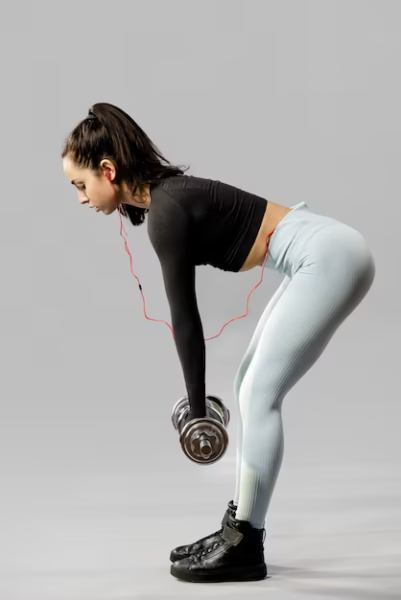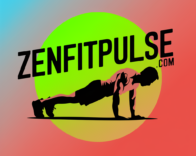
Do you want a powerful at-home workout for your legs that uses minimal equipment?
Well you’ve come to the right place! Leg Workout Using Dumbbells — a simple but effective way to build muscle, improve balance and boost your overall fitness. We will look at five top dumbbell exercises for leg strength, not requiring more than your living room space to complete.
Whether you are a novice or a more advanced fitness enthusiast, these exercises to give you that toned, powerful legs.
Why Leg Workout Using Dumbbells Are a Game-Changer
Dumbbells are not solely for upper body workouts. Adding them to your leg routine provides:
Versatile: how many exercises are involved to work all leg muscles.
Improved Balance Stability via stabilizing muscles
Progressive Overload. Each workout is heavy as the previous.
A compact and affordable alternative gym equipment
Are you prepared to level up your leg day? Now, let’s break down the 5 top exercises!
5 Best Dumbbell Exercises for Stronger Legs
1.Goblet Squat

The goblet squat is a great all-of-the-legs exercise that also activates your core and promotes good posture.
How to Perform:
Grab a dumbbell at one end and hold it vertically at chest-height with both hands.
Stand with feet shoulder-width apart.
Push back your hips and squat down until your thighs are parallel to the floor.
Press through your heels to come back to the starting position.
Target Muscles:
It works quads, hamstrings, glutes, and core.
Pro Tip:
Hold your chest up and knees in line with your toes to maximize benefits.
2.Romanian Deadlift (RDL)

This powerful posterior-chain exercise strengthens your hamstrings and glutes.
How to Perform:
Hold a dumbbell in each hand, palms facing thighs.
Stand with your feet roughly hip-width apart with a slight bend in your knees.
Hinge at your hips to lower the dumbbells down the length of your legs until you feel a stretch in your hamstrings.
Fire your glutes to return back to start.
Target Muscles:
Hamstrings, Glutes, and Lower Back
Pro Tip:
Maintain a straight back without rounding your shoulders in the motion.
3.Dumbbell Lunges

This powerful posterior-chain exercise strengthens your hamstrings and glutes.
How to Perform:
Hold a dumbbell in each hand, palms facing thighs.
Stand with your feet roughly hip-width apart with a slight bend in your knees.
Hinge at your hips to lower the dumbbells down the length of your legs until you feel a stretch in your hamstrings.
Fire your glutes to return back to start.
Target Muscles:
Hamstrings, Glutes, and Lower Back
Pro Tip:
Maintain a straight back without rounding your shoulders in the motion.
4.Dumbbell Step-Ups

Step-ups are great for developing explosive power and firing your glutes and quads.
How to Perform:
Stand in front of a bench or step while holding a dumbbell in each hand.
Step up on one foot, driving through your heel to raise your body.
Step down with the other foot and repeat.
Alternate legs; do the desired number of reps on each.
Target Muscles:
Glutes, quads, and calves.
Pro Tip:
To get the best results, perform this with a bench that allows you to have a 90-degree angle at your knees.
5.Dumbbell Calf Raises

Don’t neglect your calves! The calf raise is basic but effective for toning and strengthening your lower legs.
How to Perform:
Stand with your feet hip-width apart, holding a dumbbell in each hand.
Try to bring your heels as high off the ground as you can.
Pause for a second at the top, then lower your heels back down.
Target Muscles:
Calves.
Pro Tip:
Do this exercise with your hands on an elevated surface for deeper range of motion.
The Importance of a Proper Warm-Up
A good warm-up is important to reduce the risk of injury and improve performance before these exercises. Spend 5–10 minutes on:
Dynamics (e.g., jogging in place, jumping jacks).
Dynamic stretches such as leg swings.
Use your own body weight for squat to engage your muscles.
Cool Down: Recover Like a Pro
Recovering from a workout is as crucial as the workout itself. Reduce muscle soreness and improve flexibility by continuing to stretch for 5–10 minutes. Include:
Hamstring Stretch: Seated toe reach.
Quad Stretch: Stand and pull one foot toward your glutes.
Glute Stretch: cross your legs and twist your torso.
Sample Weekly Leg Workout Routine
Here’s how to add these exercises to your fitness routine:
Monday: Dumbbell Leg + Core Workout.
Wednesday: Arms and Shoulders Day.
Friday: Dumbbell Leg Workout.
Sunday: Cardio or Active Recovery.
Key Tips for Success
Begin Light: Master correct form before adding more weight.
Be Consistent: Stick to your routine for long-term results.
Monitor Progress: As you gain strength, work up from lighter dumbbells to heavier ones and/or more reps.
Listen to Your Body: Don’t overtrain and take rest days as needed.
Please Listen to Our Podcast On Youtube
Conclusion
If you want strong legs, dumbbell leg workouts are one of the best and most efficient ways to do it at home.
Performing movements such as Goblet squats, Romanian deadlifts, lunges, step-ups, and calf raises will ensure that you’re working all major leg musculature, and can provide incredible results. Note: Consistency, form, and progressive overload are essential for leg development.
This workout should provide you with powerful, lean legs, so grab the dumbbells and get started! Focus on what you can control, and let the results speak for themselves.
Check out our guide to Upper Chest Home Workouts
FAQs
Q1: What should be my dumbbell weight when first doing leg exercises?
You should begin with light dumbbells (5–10 pounds) and gradually progress as your strength develops.
Q2: Are these exercises daily exercises?
For optimal muscle recovery, it’s also best to leave at least 48 hours of rest between leg workouts.
Q3: Is it ok for beginners to do their legs with dumbbells?
Absolutely! Begin with lighter weights and ensure you have proper form.
Q4: When can I expect to see the results?
With regularity, you can see stronger, more toned muscles in just 4–6 weeks.
Q5: Should I do dumbbell leg workouts together with cardio?
Yes! Support cardio training twice a week on non-lifting days for strength and fatigue endurance and fitness.
References
Schoenfeld, B. J. (2010). The mechanisms of muscle hypertrophy and their application to resistance training. Journal of Strength and Conditioning Research, 24(10), 2857-2872. DOI:10.1519/JSC.0b013e3181e840f3
American Council on Exercise (ACE). (2022). Importance of Strength Training for Lower Body Muscles. Retrieved from acefitness.org
McGill, S. M. (2001). Low back stability: From formal description to issues for performance and rehabilitation. Exercise and Sport Sciences Reviews, 29(1), 26-31. DOI:10.1097/00003677-200101000-00005
Harvard Health Publishing. (2023). The Benefits of Strength Training for Longevity and Health. Retrieved from health.harvard.edu
Discover more from zenfitpulse
Subscribe to get the latest posts sent to your email.

